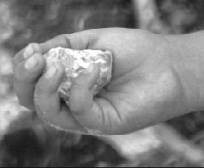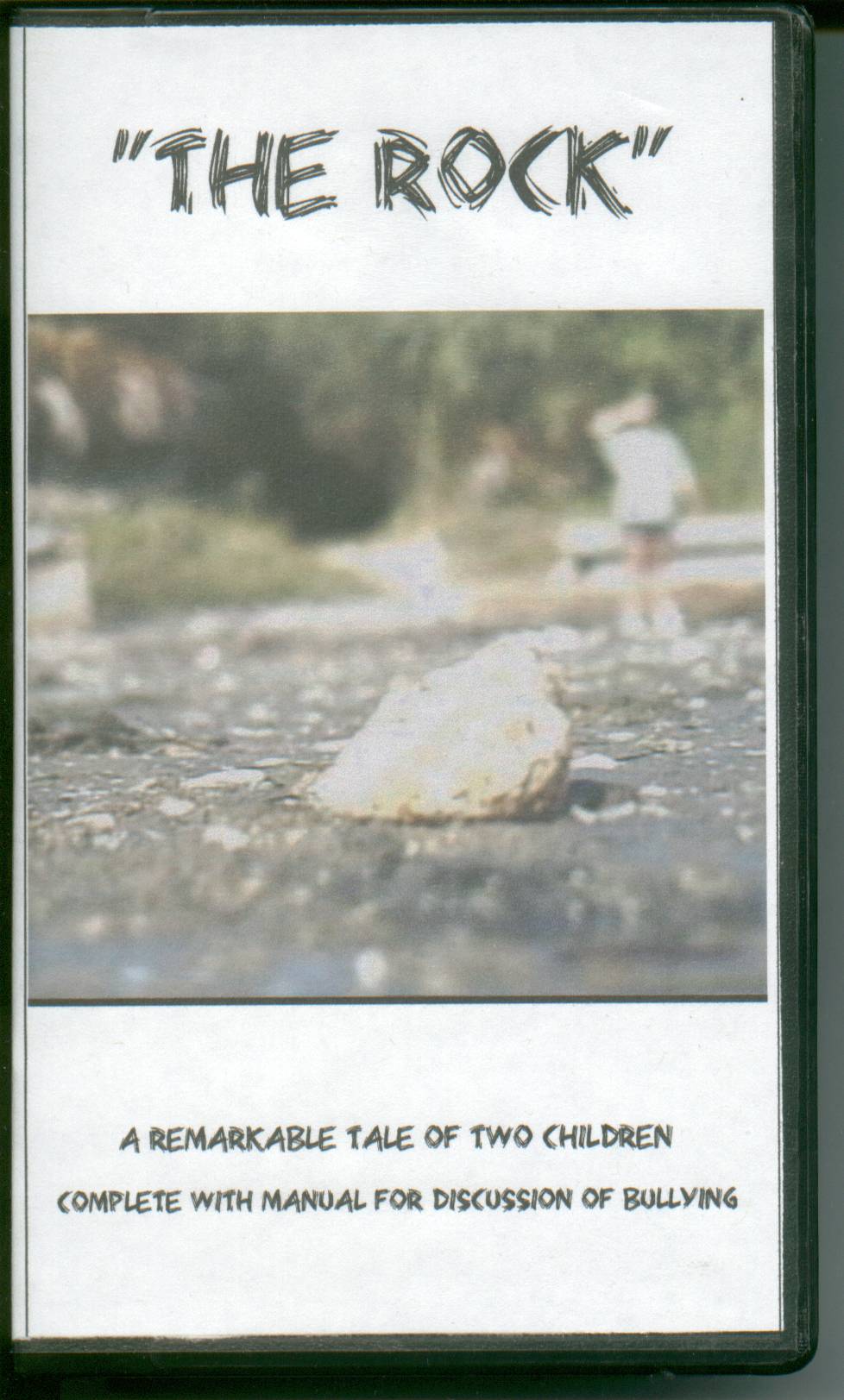 I. Introduction. Only one situation and response depicted. Many others are possible.
I. Introduction. Only one situation and response depicted. Many others are possible.
A workshop/presentation/discussion based on a story and video by Liberty Goodwin, inspired by the experience of a Quaker girl in Utah dealing with a bully throwing rocks at here on her way home from school.
 I. Introduction. Only one situation and response depicted. Many others are possible.
I. Introduction. Only one situation and response depicted. Many others are possible.
II. Character Selection. Participants choose characters they wish to pretend to be, and respond as. They are asked to think during the video of how what comments and/or questions their character might have after the showing, about what they have seen and heard.
Character options include: Jessica, Clay, Jennifer, Debby, Bruce, Billy, Jack, Mrs. Gates, Mr. Gates, Mrs. Parker, Mr. Parker, Another Parent, Another Schoolmate, School Guidance Counselor, School Psychologist, School Principal, Another Character of Their Choice.
III. Video Showing -“The Rock” (35 minutes).
IV. Responses: Each person, “in character”, gives their reaction to and opinion about what they have seen.
V. Information Sharing: Leader presents some generalizations about non-violent responses, their common characteristics and how they may
be successful.
VI. Role Plays: As time permits, participants improvise several role plays, based on the video. They may continue in the same character, or choose a new one.
A. What might have happened afterwards between Jessica & Clay?
B. What are alternative ways of handling the situations?
1. Between Clay and the boys in the schoolyard.
2. Between Jessica & Clay at any point.
C. What advice might you give to a child, parent or school personnel?
VII. Final Thoughts: A chance for any additional comments or questions.


“THE ROCK”
By Liberty Goodwin
©1992, Liberty Goodwin
SYNOPSIS
Based on a true experience. “The Rock” is a video adapted by Liberty Goodwin from her short story of the same name. The opening scene takes place on a Thursday morning. Clay, a somber—faced boy of 13, is seen on a little beach which is his favorite retreat, throwing a rock into the water. He wades out to retrieve it, and puts it in his pocket. Leaving, he emerges from the beach path and walks in front of Jessica, a nine—year old girl, riding her bike to school, who barely avoids hitting him. He stands and gives her a dirty look, then stalks off.
In the next several scenes, we learn of both the characters’ home lives. Jessica is nurtured by two warm and loving parents, who take an interest in what she does, read stories to her at bedtime, and encourage her study of the violin. Clay’s mother is a woman who has been through much stress, is struggling to keep her second marriage going, and withdraws from dealing with Clay’s problems because of her inability to cope. Clay’s stepfather is unable to relate to Clay. There is little interaction between the three, and Clay spends much of his time alone in his room.
Friday afternoon, in the schoolyard, we see Clay being teased by some other boys about his lack of athletic ability and difficulty keeping up with schoolwork. They leave, but Clay returns to practice throwing a basketball. Jessica and her friend Jennifer, leaving orchestra practice, are giggling together as they walk by, and Clay thinks they are laughing at his awkwardness. He chucks the ball at Jessica, suggesting she see if she can do better – and she makes a basket. He goes off in disgust. At home, his mother complains about the loud music on his radio, and he retreats to his beach. There, Jessica comes upon him, having decided to explore the beach path. He chases her off with a war whoop.
Monday afternoon, knowing that Clay has been kept after school. Jessica and two friends decide to go to the little beach and play with a beach ball. But Clay follows them, grabs the ball, teases them and throws the ball into the bushes. Retrieving it, Jessica discovers a shell mosaic, and the girls speculate on whether Clay was the one who made it. Clay arrives home and fights with his mother, who refuses to go to school to meet with his teacher. Jessica, very curious about Clay, is outside listening, and Clay sees her there. When she goes home, she wonders about Clay with her mother. Later, she plays her violin for her father, who then reads her a bedtime story. Clay, now curious about her, is lurking outside, and, feeling jealous and resentful, takes her bike and hides it.
During the next few days – Tuesday to Thursday – Clay harasses Jessica, who is now walking because of her missing bicycle, on her way to and from school. He mimics her violin playing, dogs her footsteps, kicks rocks and cans past her, pops out at her and stares at her.
By Thursday afternoon, Jessica, very upset, comes home crying to her mother for help. Her mother, realizing she is only frightened, not hurt, tries to help her understand Clay’s behavior and find a way to deal with it herself. Later, she and Jessica’s father discuss the situation, with the mother urging that they encourage Jessica’s independence. Later, however, we see a dark figure hovering worriedly at the door to Jessica’s room. It is her mother, and, finding Jessica still awake, she sings her a lullaby to soothe them both.
The same evening, Clay, in his room, listens to his mother and stepfather arguing about him. He slips out and watches from the yard as their fight continues. When his stepfather presses to have Clay sent away to school, and his mother agrees, Clay runs off to his beach. Leaning against a tree, he falls asleep.
Friday morning, Clay wakens and goes to wait for Jessica. She talks to her father about her fears as she leaves the house, but he is as uncertain as she about what can be done. At least, since her bike has been found, she no longer has to go on foot to school. Nevertheless, Clay intercepts her on her way. He shows her the rock, jeeringly suggesting she try to catch it. She speeds off. Clay returns to the beach and spends the day in an orgy of building in the sand.
After school, Jessica works up her courage in a talk with her friend Jennifer. She rides determinedly past where Clay is waiting for her, and impulsively sticks out her tongue at him. Infuriated, he throws the rock at her. Stunned that he actually did that, she gets off her bike, walks up to him and confronts him. Looking him in the eye, she challenges him as to whether trying to hurt a little girl is what he really wants to do, whether this is really the kind of person he wants to be.
Clay breaks down in confusion and embarrassment, and flees to the beach. He throws himself down, sobbing. Jessica has picked up the rock, and started toward home, but can’t resist coming down the beach path to see if he is there. She sees him crying, and realizes that, as her mother had said, his bullying was really a facade to cover up his own weakness.
THE VIDEO IS AVAILABLE AS A DVD, ALONG WITH A MANUAL FOR DISCUSSION OF BULLYING.
To purchase the set or to request a showing & discussion led by Liberty contact her at: Tel. 401-351-9193, or friendliberty@quakerworks.net